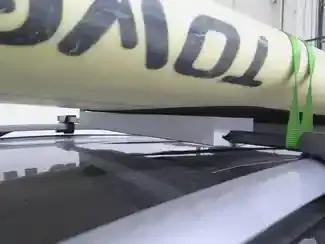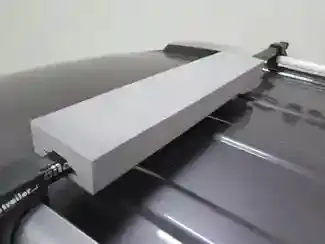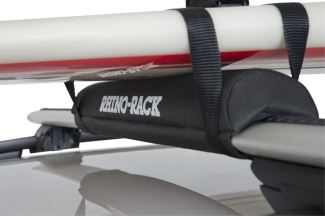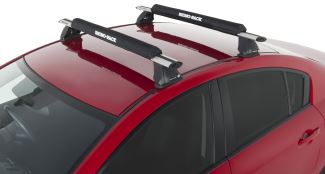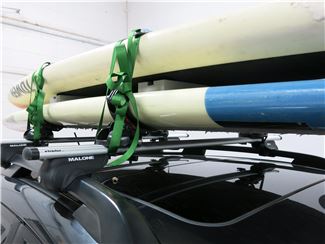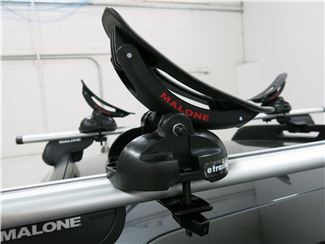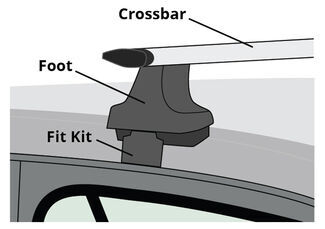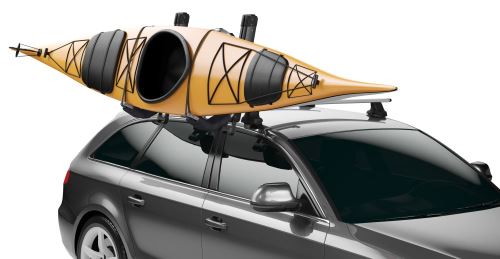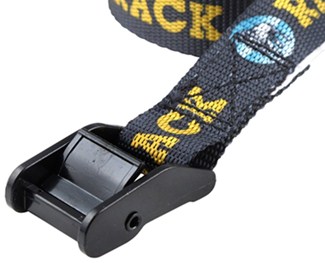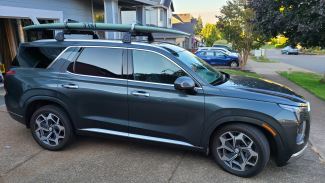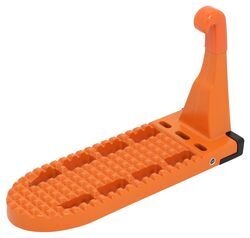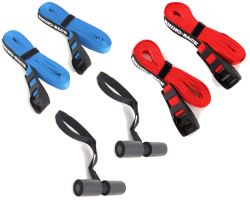
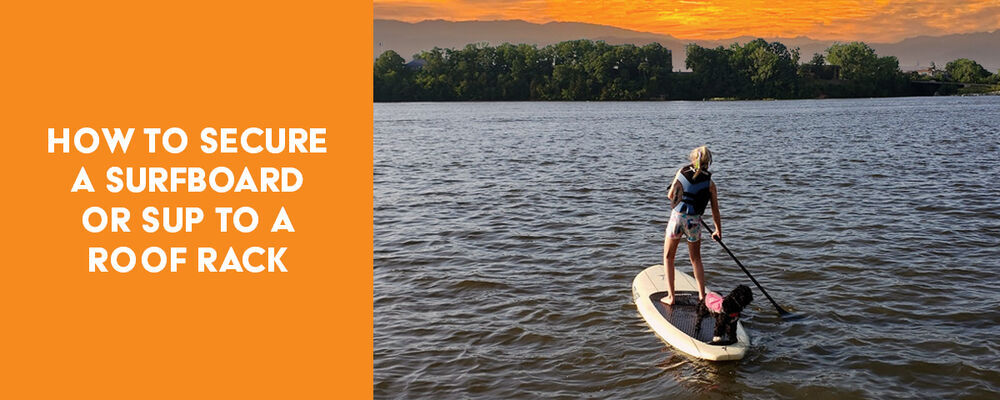
How to Secure a Surfboard or Stand-Up Paddleboard (SUP) to a Roof Rack
Roof rack Pads, blocks, or carrier for board Cam buckle/cinch straps (if not included with carrier)
Step 1: Attach Pads or a Carrier to Crossbars
Step 2: Load Your SUP or Surfboard
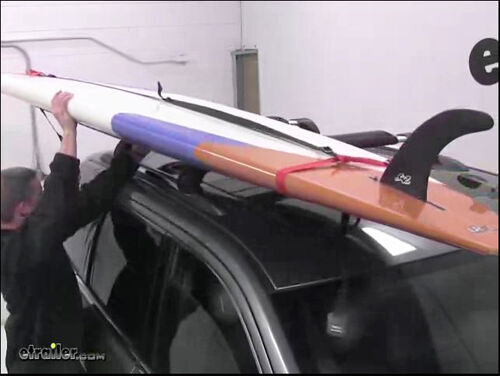
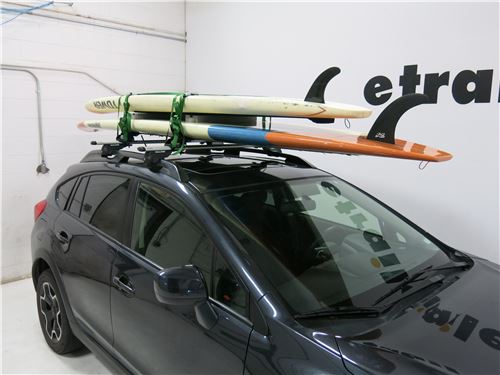
Step 3: Strap Board to Crossbars with Cam Buckle Straps
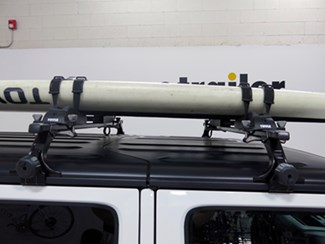
Tips for Securing a Surfboard or SUP:
Before securing the strap in the buckle, twist the strap to prevent flapping against the vehicle roof surface. This will help prevent annoying wind noise. Give your board a little shake to make sure it doesn't shift before you drive away Secure any excess strap by tying it up or shutting it inside your vehicle's doors Try to keep your cinch buckle from contacting your board or roof while you drive by securing it away from either surface. You can also grab a set of cinch straps with buckle protectors specifically so you don't have to worry about scratching anything.

Departments
Towing
- Trailer Hitch
- Fifth Wheel
- Gooseneck
- Towing a Vehicle
- Front Hitch
- RV Hitch
- ATV Hitch
- HD Truck Hitch
- Vehicle Wiring
- Brake Controller
- Ball Mounts
- Weight Distribution
Sports and Recreation
Trailer Parts
- Utility Trailer
- Boat Trailer
- Landscape Trailer
- Enclosed Trailer
- 5th/Camper Trailer
- Car Hauler
- Horse Trailer
Vehicle
Contact & Help

What our customers are saying:
"WOW! I am impressed! I called to place my order and real person answered, spoke perfect English, albeit a slight southern accent, and my order was sent within a day, shipped quickly and I had it a few days later. I saved over a hundred dollars over local and installed it my self. I cant imagine how that they could do any better. THANKS!"
Eric
Cedar Springs, MI
Popular Vehicles
- Subaru Forester
- Ford F-350 Super Duty
- Ford F-250 Super Duty
- Chevrolet Silverado 1500
- Jeep Wrangler Unlimited
- Jeep Wrangler
- Ram 3500
- Toyota Highlander
- Ram 2500
- Chevrolet Silverado 2500
- Subaru Outback Wagon
- Chevrolet Silverado
- Dodge Ram Pickup
- GMC Sierra 2500
- Ram 1500
- Ford F-250 and F-350 Super Duty
- Jeep Grand Cherokee
- Toyota Tacoma
- GMC Sierra 3500
- Toyota Tundra
- Ford Escape
- More >>



